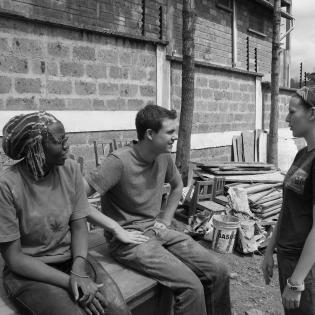What Does Judaism Say About Tolerance? (Private-Religious)
Learners will examine the ethical foundations of tolerance from the Torah and understand what it means in both the religious and social context.
The learner will:
- understand and be able to verbalize Judaism’s perspective on tolerance.
- compare and contrast different situations where tolerance is essential or unnecessary and explain why this might be so utilizing Torah values.
- understand and articulate the difference between tolerance and acceptance.
Attachment One: Debate Topics
The Passuk from Lev 19: 18
Instructions
Anticipatory Set:As the learners enter the room have the passuk from Lev 19: 18 “love thy brother as thyself” “V’ahavta l’reacha Kamocha” on display. Pointing to the passuk, ask the class what it means to them to love their fellow-man? Are their parameters for this love? If someone commits a crime does the passuk still apply? Did the Torah give a disclaimer as to when this passuk applies and does not apply?
Divide the class into two groups. Each group will be given one of the Debate Topics (Attachment One). These groups will further be split in half to make one half “defend” the statement and one be “against” the topic. (Teacher Note: Because it is important that the learners develop the skill of being able to see things from different perspectives, you may choose to place learners who you think would be “for” a topic in the “against” group and vice versa.)
Have each group come up with a list of 5-10 reasons to defend their assigned perspective using social as well as Torah Values.
Then have the two groups assigned to Debate Topic #1 Attachment One: Debate Topics face each other and in turn, share their assigned topic perspective.Teacher Note: First, the “for” group will share their opinions and then the “against” group can debate the “for” group’s opinions. Then the “against” group will have an opportunity to share their opinions after which the “for” group will have a chance to debate the “against” group’s opinions
Then open the debate for the rest of the class to share their opinions.
Repeat the process for the two groups assigned to Debate Topic #2 Attachment One: Debate Topics.
Conclude this lesson using the following prompts:
- Describe how you exercised tolerance in this debate? (i.e. we listened to an opinion that was not our own.
- What did you feel like when the other group did not agree with you? (i.e. like I would do anything to get them to, that they should have had my opinion, that they were closed minded, etc)
- What was the goal of the debate? (i.e. to get us to see the other side…)
- Does tolerance mean acceptance?
- To whom is it imperative that you be tolerant?
- What connection can be made between our religious discussions at the beginning of this lesson to the idea of tolerance?
The learner’s involvement in class discussions and the observed behavior and thought processes evident during the debates will form the basis for the assessment of this lesson.
Handouts
Philanthropy Framework
-
Strand PHIL.II Philanthropy and Civil Society
-
Standard PCS 01. Self, citizenship, and society
-
Benchmark HS.2 Discuss and give examples of why some humans will sacrifice for the benefit of unknown others.
-
-
Standard PCS 07. Skills of Civic Engagement
-
Benchmark HS.1 Utilize the persuasive power of written or oral communication as an instrument of change in the community, nation or the world.
-
-
